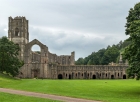Historic Environment
Schools that are already teaching SHP will be familiar with the concept of a local History study, unlike their Modern World counterparts. However, the new GCSE is significantly different from what has gone before, as the unit will be assessed by terminal assessment and for most assessment bodies the site will be selected for schools. So, how can we embrace the opportunities offered by this study of the historic environment? Firstly, it is worth comparing how the examining bodies have designed this module. Each exam body has different assessment focuses and freedom of choice. It may also call for a re-evaluation of how your school teaches at Key Stage 3. What skills do you want to embed?
Sort by:
Date (Newest first) | Title A-Z
Show:
All |
Articles |
Podcasts |
Multipage Articles
-

Thinking about local history - Step by step local study
ArticleClick to view -

Time and Place; Using a Local Historical Site with Key Stage 2 and 3
Multipage ArticleClick to view -

Triumphs Show 169: Using 360 VR Technology with the GCSE Historic Environment study
ArticleClick to view -

Triumphs Show 170: making a place for fieldwork in history lessons
ArticleClick to view -

Ufton Court
ArticleClick to view -

Using sites for insights
ArticleClick to view -

‘Man, people in the past were indeed stupid’
ArticleClick to view

